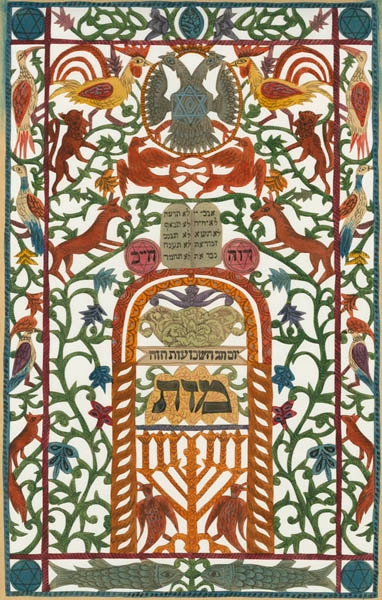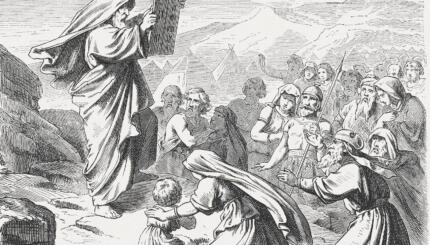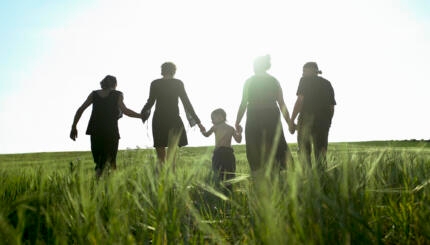Unlike Passover and Sukkot, which both have a number of important home rituals, most Shavuot rituals take place in synagogue. Here are a few things to look forward to:
(1) Tikkun Leil Shavuot – Many Jews stay up all night, from sundown when Shavuot begins until sunrise when the morning service of Shavuot takes places, studying Torah. This practice originated with the mystics of Safed. One reason given is that the Israelites slept in late on the day of Revelation and had to be awakened by Moses. To avoid making that mistake again, we stay awake all night, eager to receive the divine law. The mystics also thought that the heavens opened at midnight to receive prayers, and Moroccan Jews believe that staying up all night will grant one life in the next year. Some Jews ritually immerse in a mikvah at sunrise, purifying themselves for Shavuot just as the Israelites purified themselves to receive Torah. There is also a custom of staying up late on the second night of Shavuot to recite the entire book of Psalms (there are 150 of them). This is because King David, traditionally identified as the author of psalms, was born and died on Shavuot.
(2) Holiday meals – Shavuot meals are much like other holiday meals, but with one difference. Many Jews refrain from meat and eat only dairy dishes on Shavuot. No one knows exactly why, but two explanations are popular:
- Consuming milk products is a reference to the divine promise of a land flowing with milk and honey.
- Upon receiving the Torah, with all the laws of kashrut, Israel realized that none of the meat in its possession was kosher. So, they ate dairy foods until they could properly prepare kosher meat.
(3) Special Readings and Prayers – There are lots of special readings and prayers for Shavuot—the Book of Ruth, Exodus 19:1–20:23 recounting the dramatic moment of revelation, Hallel, Yizkor. Read more about the scriptural readings for Shavuot here. Learn more about the prayers recited on Shavuot here <link coming!>.
With your help, My Jewish Learning can provide endless opportunities for learning, connection and discovery.
(4) Passing the Torah from person to person – Instead of the usual Shabbat and holiday practice of one person parading the Torah scroll around the congregation, some congregations pass the Torah scroll from person to person so that each person literally receives the Torah on Shavuot.
 (5) Greenery – It is customary to decorate the home and synagogue with flowers, branches, and even trees. The rose, in Hebrew shoshana, is a popular choice based on a play of words in the Book of Esther. Esther 8:14 reads: And the law was proclaimed in Shushan. Reading “Shushan” (in context a city) instead as shoshana (rose), the line can playfully be heard as The Torah [which literally means “law”] was given with a rose.
(5) Greenery – It is customary to decorate the home and synagogue with flowers, branches, and even trees. The rose, in Hebrew shoshana, is a popular choice based on a play of words in the Book of Esther. Esther 8:14 reads: And the law was proclaimed in Shushan. Reading “Shushan” (in context a city) instead as shoshana (rose), the line can playfully be heard as The Torah [which literally means “law”] was given with a rose.
The origin of this custom is obscure, but there are a few explanations:
- The area around Mount Sinai was green because animals were not permitted to pasture there.
- According to the Mishnah, the judgment for trees takes place on Shavuot.
- The greenery is a visual reminder of the baskets of first fruits that were offered at the Temple on Shavuot.
- The greenery reminds us of the basket of baby Moses who, according to tradition, was drawn from the Nile on Shavuot.

(6) Papercutting – There is a custom of making beautiful papercuts on Shavuot. Often containing floral motifs, these are used to decorate the synagogue.
(7) Rituals in Israel – In Israel today, there are a number of rituals that harken back to the agricultural dimension of Shavuot. These include processions, singing and dancing, that center on the first fruits of the year’s harvest—and also water fights!
(8) Confirmation – Some Jewish congregations hold confirmation ceremonies on Shavuot. These ceremonies for teens (usually 15-17) celebrate a continuation of a child’s Jewish studies, even after bar/bat mitzvah, and a young adult’s own confirmation of their commitment to Judaism, now that they’re more mature than they were at age 12 or 13. These ceremonies often draw an explicit parallel between Israel’s acceptance of the Torah and the teen’s acceptance of adult Jewish obligations.



